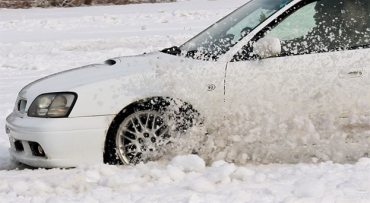With winter in full swing, it has become imperative for motorists like you to become more cautious in driving.
While car accidents are more common in the summer than winter, driving in snow and ice still poses a lot of risks especially for novice drivers. According to the National Highway Traffic Safety Administration and Auto Insurance Center, around 800 Americans were killed in car accidents due to snow, rain, or ice from 2011-2015. Meanwhile, the U.S. Department of Transportation says that around 116,000 people suffer injuries in car accidents due to snowy and icy roadways every year.
You can avoid car accidents this winter by following these tips:
- Prepare your car for the harsh road conditions
Before heading out, make sure that your car is ready for the harsh road conditions during the winter. This should reduce the chances of you encountering mechanical troubles along the way.
The tires are perhaps the most important critical when it comes to avoiding accidents. After all, these are the only parts of the vehicle that are directly in contact with the road. Tires also have the tendency to deflate when the mercury drops below 32 degrees Fahrenheit.
Make it a habit to check your tire pressure weekly since lower tire pressure not only affects gas mileage but also wears out the tire faster. Moreover, improper tire pressure will impact your control of the car in snowy and icy roads. Properly inflate your tires to improve the car’s grip and handling.
Check for worn-out tires and consider replacing them. If the tires are still in good shape, you can simply rotate them. Put the tires with better tread on the back to prevent spinouts with deep snow.
Speaking of tires, it is also highly recommended that you use winter tires designed to grip snow and ice and give you better handling and control. Winter tires will also let you brake more quickly in snowy and icy roads.
Other preventive maintenance tasks to prepare your vehicle during the winter include adding antifreeze, installing new wiper blades, and replacing washer fluid.
- Check the road conditions before heading out
Before heading out, check the weather conditions in your area so that you would know what to expect on the road. This will also give you the time and opportunity to plan your route and consider taking alternate paths if necessary.
If you can, avoid driving in severe weather. If you don’t have to travel to school or work, you might as well stay at home. It would be better and safer for you to stay off the roads.
- Slow down.
Speeding on snowy or icy roads can be a death sentence. Driving too fast can cause your car to skid. It’s also more difficult to brake on snowy roads, making it even more critical to slow down when driving in the winter.
You may be following speed limits, but here’s one thing to keep in mind: those posted on the roads are intended for optimal weather conditions. Hence, you must further reduce your speed when driving in the snow.
It is also recommended that you give yourself enough traveling time so you won’t be in a hurry and drive faster as a result.
You should also start slowly then pick up speed gradually on slick roads. This driving habit will help you maintain car traction and prevent spinning on its wheels.
Plan well in advance when stopping—never brake suddenly. Gently press on the brakes and slowly add pressure.
Maintaining a slow speed while driving will also help you turn slowly on corners. You will also be able to anticipate lane changes and avoid humps and potholes when you are driving slower than usual.
- Increase following distance
Related to slow down when driving is increasing your following distance when you drive on snow and ice. When you are slower than your usual driving speed, you can also give more space between your car and the vehicle in front of you.
According to studies, it would take up to 10 times longer for a vehicle to come to a complete stop when running on icy roads. Therefore, you should give yourself enough time to respond in case of the vehicle in front of you stops or a crash happens up ahead.
The rule of thumb is to keep a safe distance of a minimum of three car lengths between you and the vehicle you are trailing when on icy roads. In terms of seconds, your vehicle should be about 10 seconds behind the car you are following.
- Use the headlights
Snow and fog can limit light and visibility even during the day. The use of headlights, therefore, is highly recommended when driving in snowy and icy roads.
To prevent blinding oncoming motorists, you should use low-beam lights within 50 meters. The same goes for following a vehicle within a distance of around 60 meters.
On the other hand, you should use high-beam headlights when you are alone on the road. High-beam headlights can also be helpful when you are traversing dark roads, especially in the countryside.
One more thing to remember: keep the headlights clean all the time so you can get the most out of them especially during winter.
- Avoid slamming on the brakes
In snowy weather, slipping and skidding are common occurrences. The natural inclination for a motorist who loses control of the vehicle is to brake hard.
However, doing so can make things worse because the tires would lose traction. When this happens, it will even be more difficult for you to regain control of the vehicle.
Instead of hitting the brakes hard, you should ease off the gas pedal when you feel the car starting to skid. This should let the vehicle slow down on its own.
Those are just six steps to prevent accidents when driving in snow and ice. Keep these pointers in mind so that you will be away from any unfortunate on the road during this winter season.

























































Comments